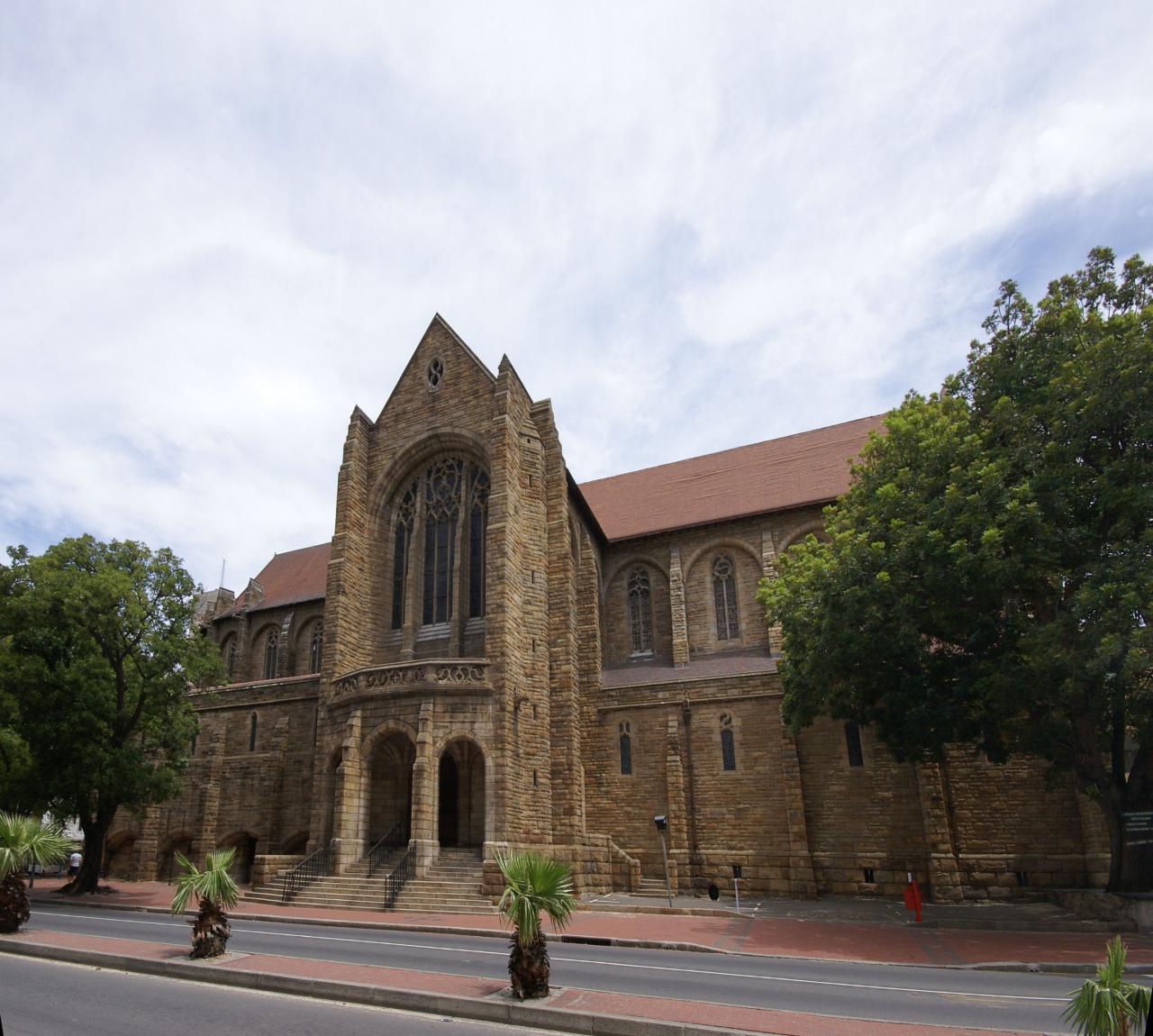“The People’s Cathedral”, site of resistance against apartheid.
1897 built in 13th century French Gothic style in Table Mountain Sandstone quarried from Platteklip Gorge;
Architect Sir Herbert Baker.
1901memorial stone in buttress adjoining Government Ave laid by Duke of Cornwell and York (later King George V).
1909 organ installed from St Margaret’s Church, Westminster.
1978 decision to extend Church; Architect Revel Fox
1989 Archbishop Desmond Tutu led a mass demonstration of 30 000 people from its steps, where he coined the phrase “Rainbow People” to describe South African’s diverse population.
Objects of interest: Great North Window (Francis Skeat) portrays Bernard Mizeki,first African martyr of Anglican Church. Stones from Canterbury Cathedral, Glastonbury Abbey and Winchester Cathedral; bronze cross attached to is a model of an eighth century brooch found under a Canterbury Street; brass Coptic Cross found in Abyssinia, 1868; altar piece is copy of Vicenzo Foppa’s “Adoration of the Maggi” (Henry Duke); painting of “The Rider on the White Horse”, (George Frederick Watts; 1817-1904); painting of St Francis of Assissi (Domenico Zampieri ,1641);painting of Descent from the Cross ( Frank Spears); the “Black Madonna” given by St Peter’s Priory, Johannesburg (1987), carved in lignum vitae and silver(Leon Underwood, 1939), stone carving of mother and child (Sir Charles Wheeler), painted triptych ( Lady Wheeler); bronze effigy of Archbishop William West Jones, founder of the Cathedral; largest stained glass window in the southern hemisphere ( Francis Skeat,1951), other stained glass windows by John Lisle (1910), Francis Spear, Sir Christopher Whall, Karl Parsons, CL Grove (1941) Edward Moore (1941) Gabriel Loire ( 1966) and Leo Theron (1972); panelled teak reredos (Ivan Mitford Barberton) commemorates Archbishop Carter; Archbishop’s throne, once part of organ screen in Westminster Abbey, is a memorial to Bishop Gray; two kettle drums of the Colonial regiment of the Cape Mounted Riflemen (1878-1912) can be seen above the treasury, with regimental colours hanging overhead and a memorial book recording the names of the dead and wounded during the South African War; silver cup presented by Lord Charles Somerset (Lawrence Twentyman), memorial plaques and many other objects of interest and reverence.
In the front, Wale Street: Robben Island slate steps, a copper ball and cross – all that is left of the earlier St George’s Church; memorial slabs in the garden commemorate soldiers who served under Napoleon and under Nelson
Free entrance

